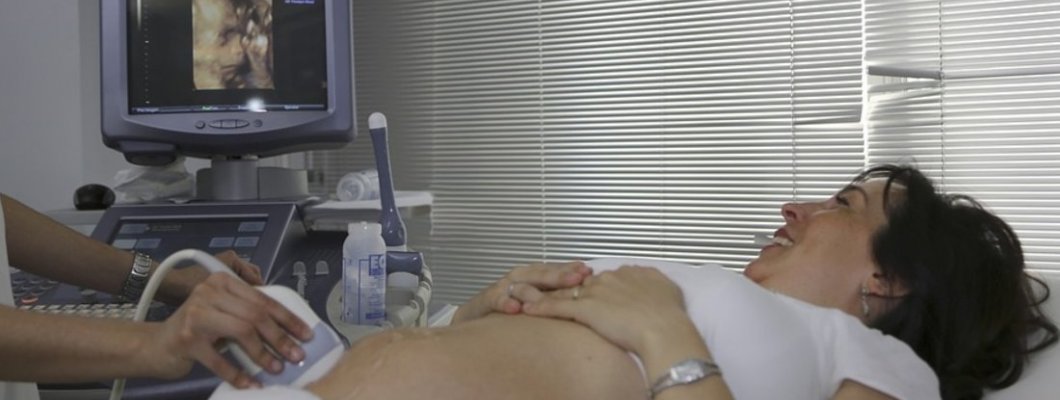Prenatal ultrasound

A prenatal ultrasound test is a standard method used during pregnancy to monitor the development of your baby. It uses high-frequency sound waves, inaudible to the human ear. The echoes are recorded and transformed into video or photographic images of your baby, so your OB/Gyn can see if everything is in check.
Obsah článku
- Ultrasound in pregnancy
- Morphological ultrasound
- Prenatal genetic ultrasound
- Prenatal screenings
- The first ultrasound
- The second ultrasound
- The third ultrasound
Are you pregnant? Prepare to be scheduled for your first ultrasound. This ultrasound will confirm the pregnancy and rule out an ectopic pregnancy. Your doctor will measure your baby and state, according to these parameters, when you are due. You might also find out whether you are pregnant with twins or even triplets. The first ultrasound is a vaginal ultrasound. It is performed by a probe inserted into your vagina because your baby is not big enough to be "visible" through your belly. It is harmless and painless so you do not need to worry about it. When your baby grows a bit, your doctor will be able to "see" the baby using an abdominal ultrasound (in which the probe is put on your belly). If everything goes right, seeing your doctor once a month will suffice. If the need should arise, your appointments will become more frequent to monitor the wellbeing of both you and your baby.
The ultrasound test is not to be performed during each appointment. It is not necessary. Though, every pregnant woman has the right for 3 “bigger” and more specific ultrasounds. These are usually scheduled for following weeks of pregnancy: at 12, 20 and 30. Most doctors have ultrasound devices available in their offices. In case your GYN' s office is not equipped with an ultrasound machine you will be sent to the nearest hospital.
Ultrasound in pregnancy

Aside from the detailed ultrasounds mentioned above, your doctor can perform a short ultrasound test whenever needed. The ultrasound test allows your doctor to not only measure your baby but to look at your cervix, placenta, uterus and ovaries, as well. These ultrasound tests show if everything is okay with you and your baby. However, more specific problems (genetical mutation, congenital deformities, etc.) if present, cannot be seen during these basic procedures. Therefore, every woman is scheduled for more detailed ultrasounds when the time comes. Every woman has a right to say no to her doctor. Every woman declaiming her right for these tests is acknowledged to take full responsibility for such action.
If everything goes right, there is no need for more extended and detailed ultrasound tests, these three would suffice. Your doctor will check you and your baby using short ultrasound tests or different methods of examination. Modern ultrasound machines even enable you to take a picture of your baby and have it printed ☺
Morphological ultrasound
When you are from 20 to 22 weeks pregnant, your doctor will schedule you for the morphological ultrasound. During this test, your doctor or sonographer will check if any anatomic anomalies are present to either rule out or confirm congenital deformities. They will check and measure each part of your baby, each internal organ (baby's brain, lungs, heart, stomach, intestines, liver, bladder..). Furthermore, the specialist will check the baby's face, limbs and spine. If you are dying to know the gender of your baby, it might be the right time to ask. Everything should be seen at this point of pregnancy.
The doctor will look at your placenta, its structure, localization, and if there is enough amniotic fluid surrounding your baby.
Prenatal genetic ultrasound
There are cases in which your first ultrasound shows some abnormalities so your doctor will schedule you for a genetic ultrasound. (Don't worry, in most cases, everything turns out to be perfectly okay even if your first screening showed something amiss). This ultrasound is performed between weeks 18 and 23 of pregnancy. If your doctor's recommendation is based on screening results or your blood test, this morphological screening is covered by your insurance.
Some women want to have this morphological screening done, even though everything looks perfect. To be sure. In this case, their insurance does not cover it. The price starts at 50 EUR. The purpose of this screening is to look for unique markers of Down syndrome.
Prenatal screenings
As we have already said, every pregnant woman has the right to have prenatal ultrasounds performed. There are three "bigger" prenatal screenings which are necessary (however, every woman has the right to refuse).
The first ultrasound
The first "bigger" ultrasound is usually performed between weeks 11 and 13. The purpose of this screening is to look for any abnormalities or genetical deformities, especially the Down syndrome. The most typical markers are mild cerebral ventriculomegaly (cerebral spinal fluid is trapped in the brain's ventricles), absent or shortened nasal bone and shorter femur (the tight). If the baby is okay, you should stop worrying about any congenital deformity or abnormality. It would have been seen at this point. For 99%.
The second ultrasound
The second big ultrasound is performed somewhere between week 20 and 22 of pregnancy. It is a morphological ultrasound – the one we have already mentioned before. Your doctor will look at your baby's organs, spine, limbs and the baby's face.
The third ultrasound
Somewhere around being 30 weeks into a pregnancy, you should expect to be scheduled for your last big screening. Your doctor will check your baby's overall development, organs and blood flow in her veins and blood vessels.































 Be Lenka
Be Lenka







